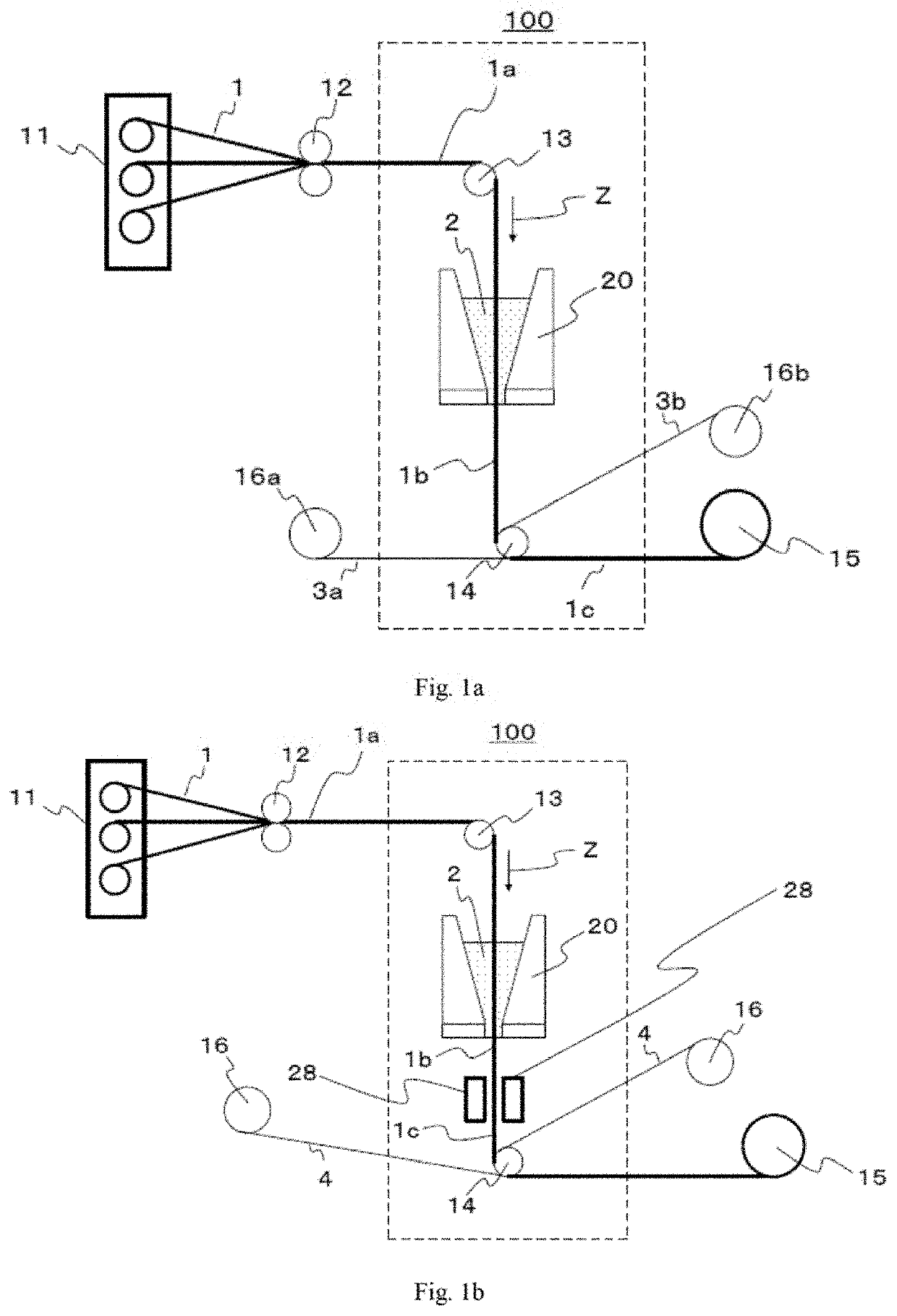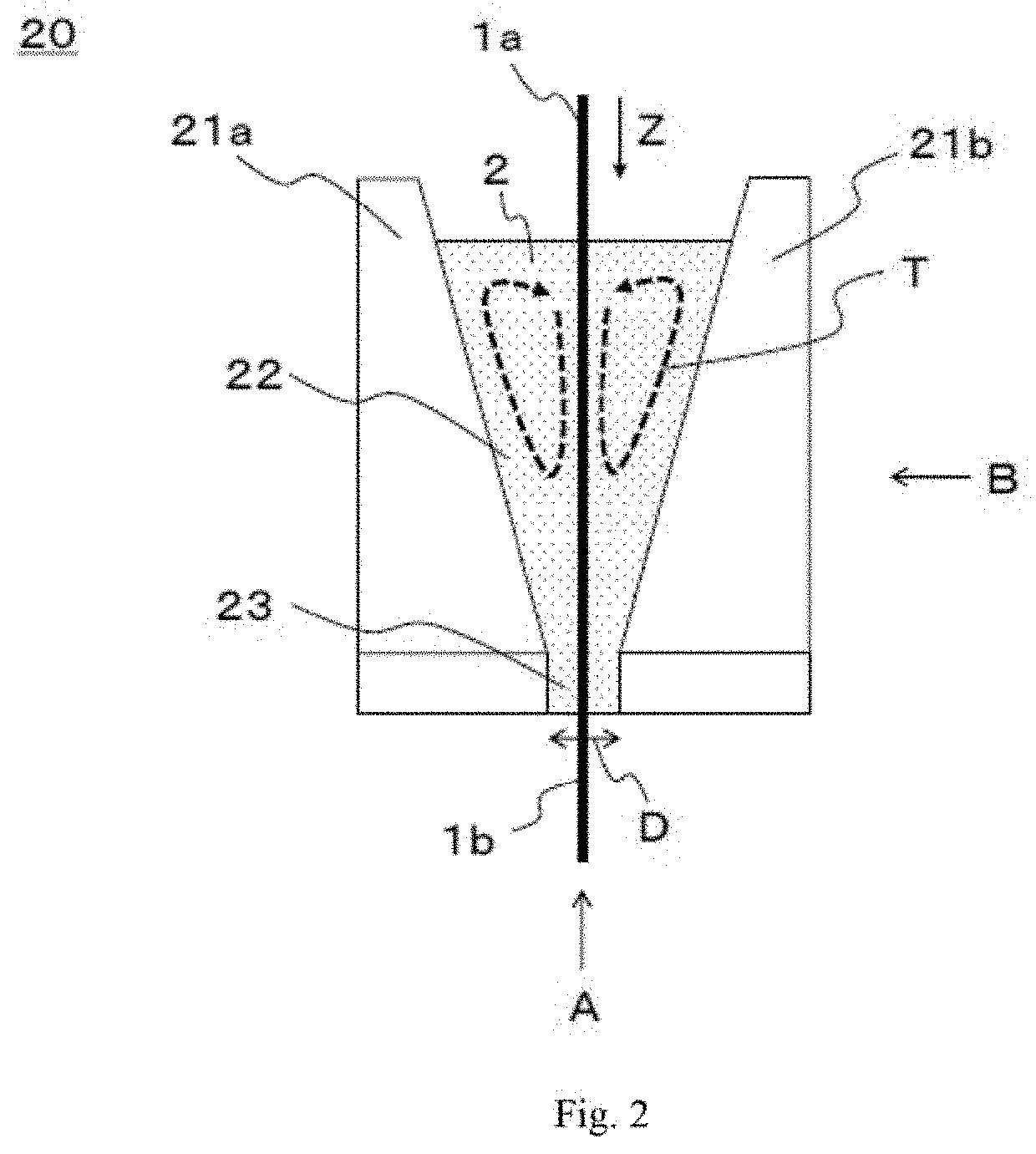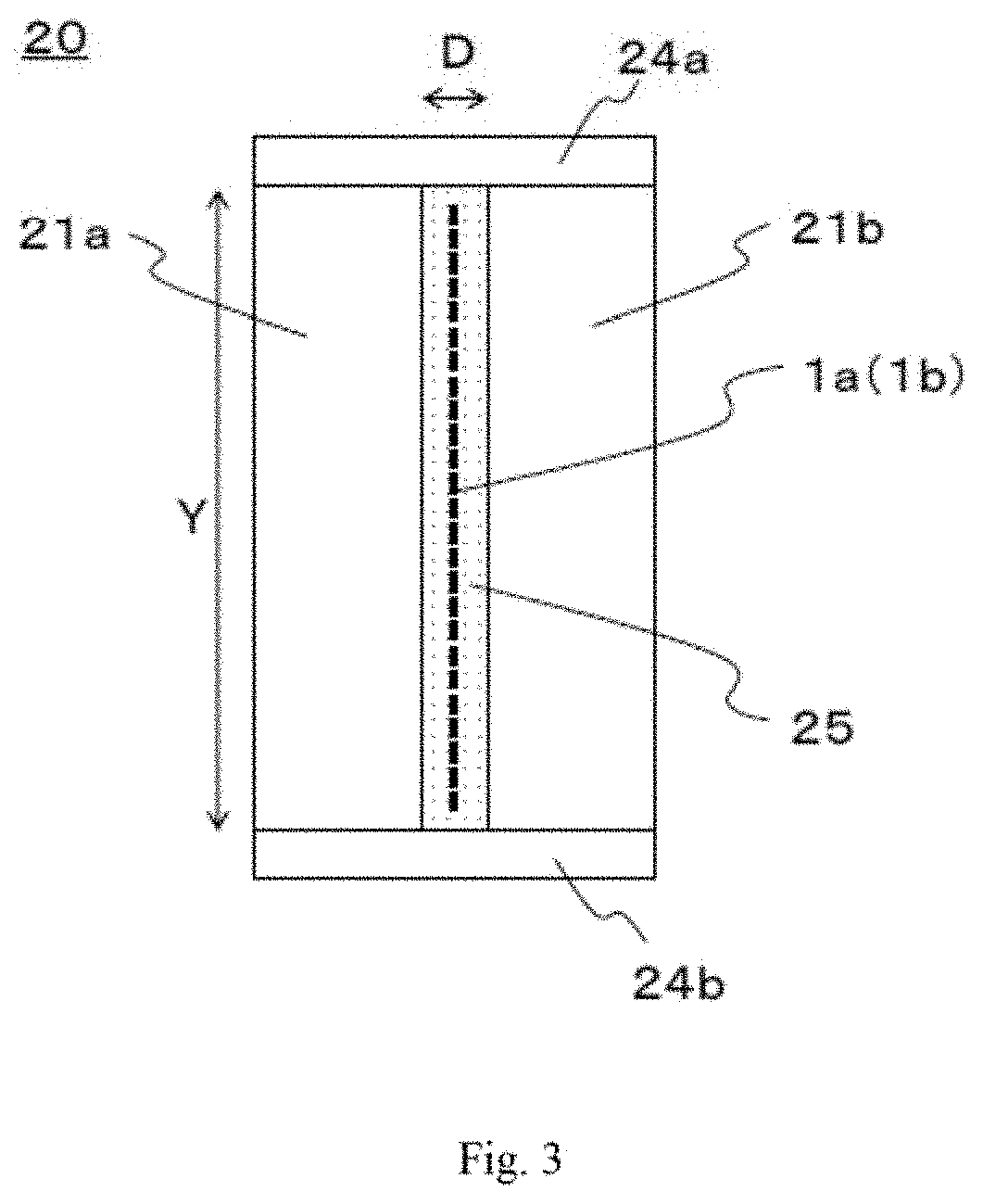Production method for prepreg, prepreg tape, and fiber reinforced composite material, and coating device
a production method and fiber reinforced composite material technology, applied in the direction of coatings, etc., can solve the problems of reducing the mechanical property of frp, reducing the quality of prepreg, and difficult to run reinforcing fiber sheets, etc., to achieve the effect of enhancing the productivity of prepreg, preventing fuzz, and suppressing fuzz
- Summary
- Abstract
- Description
- Claims
- Application Information
AI Technical Summary
Benefits of technology
Problems solved by technology
Method used
Image
Examples
examples
[0317]
[0318]Unless otherwise specified, a coating section of the type 20c in the form depicted in FIG. 7 was used as a coating section in each of Examples and Comparative Examples, and a device configured by removing a fiber bundle widening device and a smoothing device from a device configured as described in FIG. 15 (here, the depiction of a matrix resin supply device for the coating section is omitted) was used as a prepreg production device. Reinforcing fibers withdrawn from the creels were formed into a reinforcing fiber sheet at the arrangement device 415 disposed above, and the sheet was introduced into the reinforcing fiber preheating device 420.
[0319]
[0320]In the coating section, stainless steel blocks were used as the wall constituent members and forming the liquid pool and the narrowed section, and stainless steel plates were used as the side plate members. Furthermore, to heat the matrix resin, a plate-heater was attached to the periphery of the wall constituent members ...
examples 1 to 4
[0343]A prepreg was produced using a resin film obtained using a thermosetting epoxy resin composition 1 (matrix resin A) in the coating section and using a separately prepared thermosetting epoxy resin composition 2 (matrix resin B) as a resin film. In this Example, however, an additional-impregnation process was not carried out after the application of a resin film. In this regard, the temperature of the matrix resin A in the liquid pool was 90° C. (corresponding to 15 Pa·s). In addition, the running speeds of the reinforcing fiber sheet and the prepreg were 20 m / minute.
[0344]The evaluation results of the running stability of the primary impregnate prepreg in the coating section are shown in Table 1, wherein the relationship L2−W between the width L2 in the lower end portion of the width regulation mechanism and the width W of the primary impregnate prepreg and the height H along which the cross-sectional area of the coating section decreases continuously are changed variously. Th...
example 5
[0346]Application of a matrix resin, simplified additional-impregnation, and application of a resin film were carried out under the same conditions as in Example 1, and then, the prepreg was further introduced into the additional-impregnation device to undergo an additional-impregnation process. The water absorption rate of the prepreg was checked, and found to be 5%, which is a sufficient degree of impregnation.
[0347]Next, the obtained prepregs were laminated in six layers, and cured using an autoclave at 180° C. at 6 kgf / cm2 (0.588 MPa) for two hours to obtain CFRPs. All the obtained CFRPs had a tensile strength of 3.0 GPa, and had suitable mechanical properties as a structural material for the aerospace. In this regard, the tensile strength of the CFRP was measured in the same manner as in WO2011 / 118106, and the value resulting from normalizing the volume % of the reinforcing fibers in the prepreg to 56.5% was used.
[0348]In addition, observing the cross-section of the obtained CF...
PUM
| Property | Measurement | Unit |
|---|---|---|
| Length | aaaaa | aaaaa |
| Length | aaaaa | aaaaa |
| Height | aaaaa | aaaaa |
Abstract
Description
Claims
Application Information
 Login to View More
Login to View More - R&D
- Intellectual Property
- Life Sciences
- Materials
- Tech Scout
- Unparalleled Data Quality
- Higher Quality Content
- 60% Fewer Hallucinations
Browse by: Latest US Patents, China's latest patents, Technical Efficacy Thesaurus, Application Domain, Technology Topic, Popular Technical Reports.
© 2025 PatSnap. All rights reserved.Legal|Privacy policy|Modern Slavery Act Transparency Statement|Sitemap|About US| Contact US: help@patsnap.com



